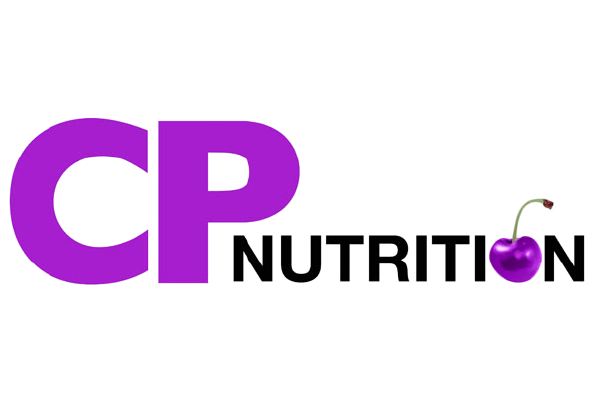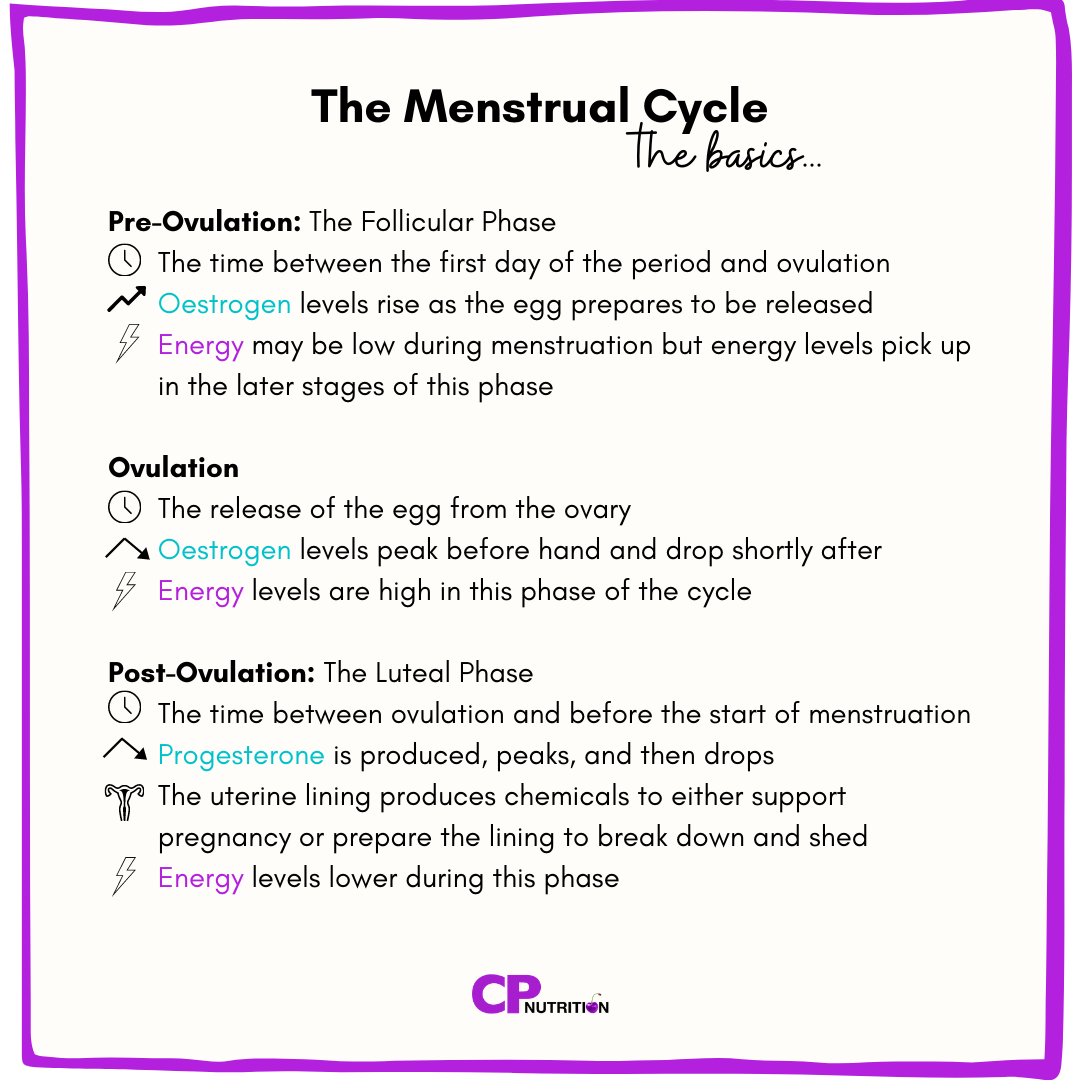The Menstrual Cycle: Hormones, Energy Levels and Nutrition
The menstrual cycle varies from woman to woman but tends to last for approximately 28 days. A normal menstrual cycle can be between 25 and 40 days and is defined as the time between the start of the period to the day before the next period.
There are three phases in the cycle; the follicular phase (approximately the first 14 days of the cycle) which includes the period, the ovulation stage (about half-way through the cycle) and then the luteal phase (the last 14 days of the cycle or so). Each phase of the menstrual cycle comes with a different hormone level and different dietary recommendations.
The Follicular Phase (Days 1-14)
During the follicular phase, menstruation occurs for the first few days. A period is the shedding of blood and uterus lining through the cervix and vagina. During this time, levels of oestrogen and progesterone are low which can result in reduced energy. Try consuming more slow-releasing carbohydrates such as oats, wholegrain versions of pasta, rice and bread, quinoa, lentils and pulses to give you the energy you need.
To make up for blood lost, it may be beneficial to increase your consumption of iron-rich food such as red meat (in moderation), dark-green leafy vegetables, eggs, beans and pulses. It may also be useful to increase your vitamin C consumption to help aid the absorption of iron into the body.
In the second half of the follicular phase, follicle stimulating hormone is produced by the pituitary gland which signals to the ovaries to prepare for ovulation. The largest follicle (fluid filled sac which contains an egg) is prepared to be released and produces oestrogen as it grows. This increased oestrogen boosts mood and energy levels.
Ovulation (Approximately Half Way Through The Cycle)
Ovulation occurs approximately half-way through the cycle which is when the egg is released from the ovary into the fallopian tube. At this point progesterone, oestrogen, follicle stimulating hormone and luteinizing hormone levels increase. This increase in hormones can boost your energy so now is a good time to take part in some movement!
The Luteal Phase (Days 15-28)
Once ovulation occurs, the follicle that contains the egg begins to produce progesterone and oestrogen. Progesterone levels peak half way through this part of the cycle and contribute to PMS such as breast tenderness, acne and headaches. If the egg is fertilised then the progesterone helps to support pregnancy by thickening the endometrium to prepare for the attachment of the fertilised egg. An increase in progesterone may cause constipation at this time of your cycle. Try increasing your fibre intake by eating oats, wholegrains, fruits, vegetables, nuts, seeds, pulses and lentils to keep you regular.
Although, if no fertilisation occurs then progesterone and oestrogen levels drop, triggering menstruation to begin again by causing the blood vessels to constrict and the tissue of the endometrium to break down. At this point, prostaglandins are also produced which cause the uterine walls to contract. This causes cramping, a common symptom of menstruation. This cramping helps trigger the period but is inhibited if the egg is fertilised, to reduce impact on early pregnancy. In the later part of the luteal phase premenstrual symptoms begin including feeling sluggish and tired. Try incorporating slow-releasing carbohydrates again to maintain your energy levels.
A decrease in leptin (the hunger hormone which tells us when we are full) combined with lower oestrogen levels can result in those classic period cravings. Try to be mindful of these cravings and become aware of what your body needs at this time.
As menstruation starts the cycle begins all over again. Remember, all cycles are different and it is important to respect and respond to your body at this time.



